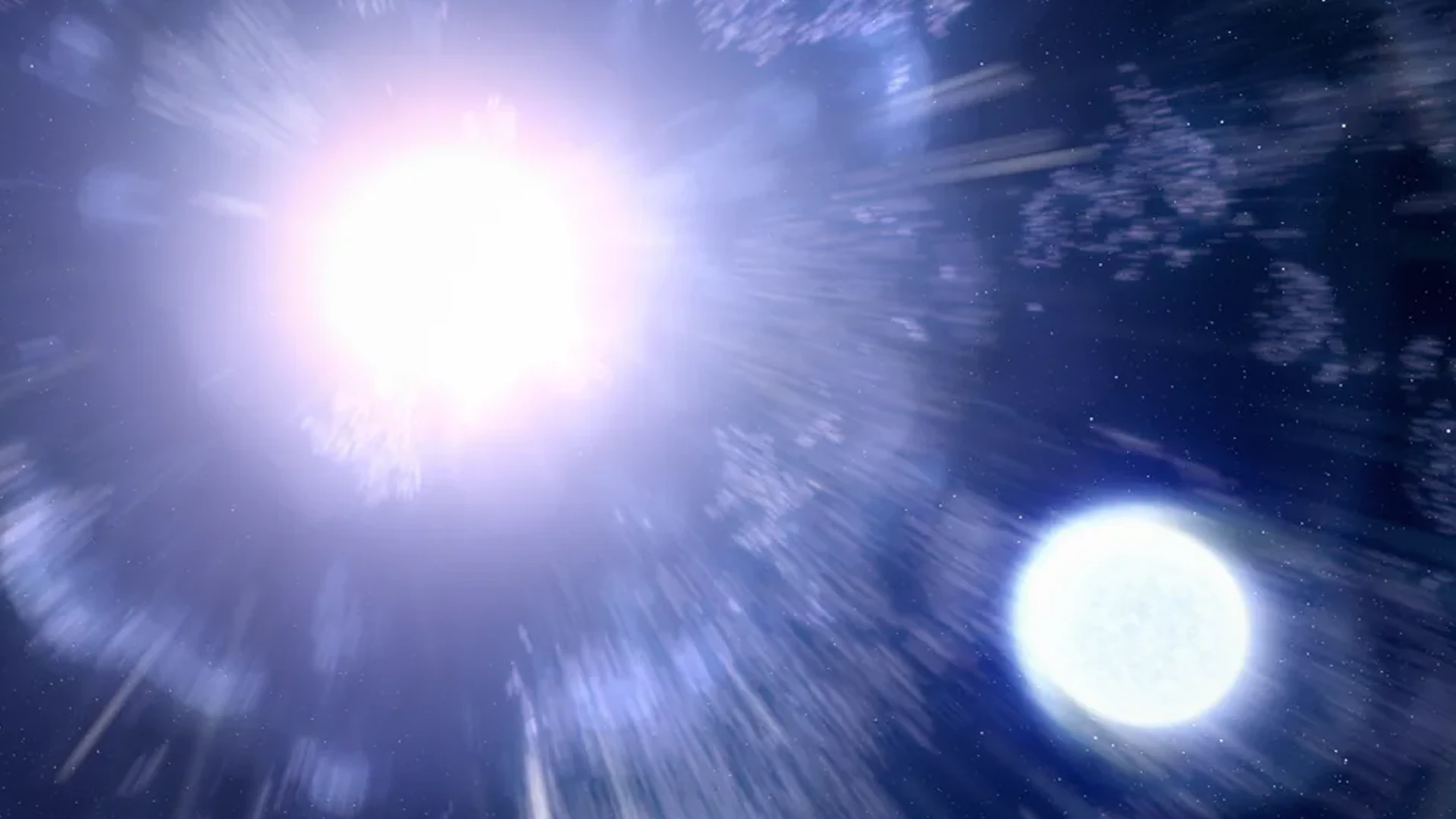The story of a star that survives.
In the deep cosmos, the Hubble Space Telescope found evidence that a star remains after its companion star (they orbited each other) went supernova — an extremely powerful stellar eruption.
The exploding star, dubbed supernova 2013ge, jostled — but didn’t destroy — its nearby companion, explained NASA. Astronomers believe that most stars have companions (unlike the sun).
The graphic below illustrates what happened. (The bottom row of boxes demonstrates what likely will occur next, ultimately showing two cores of exploded stars orbiting each other in box 6).
- Two stars orbited each other (known as a binary star system).
- One of the stars enlarged into a red giant, which is the precursor to a supernova (when the bloated star collapses on itself). While a red giant, the companion star used gravity to “siphon” off its outer layers of gases.
- The red giant star explodes in a dramatic supernova. The companion star sustains the blast.
 An artist’s conception of a star surviving a supernova explosion from its companion star (box 3).
An artist’s conception of a star surviving a supernova explosion from its companion star (box 3).
- Webb telescope’s new dazzling photos prove it has perfect vision
- Amazed scientists watched a giant star explode for the first time
- If a scary asteroid will actually strike Earth, here’s how you’ll know
Astronomers already knew something unusual was occurring with this supernova. The explosions of supernovae are usually detected by telescopes as one source of brightness. However, supernova 2013ge emitted two peaks of brightness. Researchers suspected it was a shock wave hitting the companion star. Now, the latest evidence proves they’re right: As the explosion’s brightness wanes, they’ve spotted sustained light emissions from the secondary source, which they suspect is the surviving star.
The stellar remnant was jiggled like a bowl of Jell-O, astronomer Ori Fox, a Hubble researcher, told NASA. But the star will eventually settle back to its pre-explosion form.
As the exploded star collapses, it will transition into its new, extremely compact form. It will either become a neutron star (an object so dense that “a sugar-cube-sized amount of material would weigh more than 1 billion tons, about the same as Mount Everest!,” explains NASA) or a black hole (an object so dense and massive even light can’t escape it).
It is possible that the surviving star and its collapsed companion will continue to orbit each other. Eventually, the surviving star will collapse as well. In the deep future, they could collide and create powerful ripples in spacetime, called gravitational waves. Here on Earth, astronomers have detected these cosmic ripples.
“With the surviving companion of SN 2013ge, we could potentially be seeing the prequel to a gravitational wave event, although such an event would still be about a billion years in the future,” Fox told NASA.
